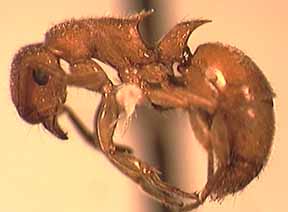

| return to guide introduction | go to genus list |
|
 |
Uniform habitus; frontal carinae narrow, sublinear, and widely separated; prominant spines on the propodeum; petiole with pronounced posteriorly projecting spine; color yellow orange. Nest in wet forest soil; moderately common; nocturnal foragers on low vegetation.
|
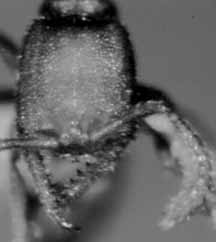 |
Uniform habitus but variable in size; mandibles elongate, linear, with row of teeth on inner margin; clypeus with small anterior teeth; petiole with broad attachment to postpetiole; eyes small or lacking. Cryptic ants of leaf litter; rare.

One species in Costa Rica (B. deletrix); unique, saber-like mandibles. Forest leaf litter; rare.
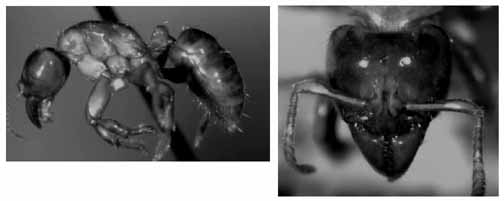
Large, shiny, eyeless ponerine with distinctive mesosoma and petiole shape; stout, short, peg-like setae on mesotibiae. Entirely subterranean; rare.
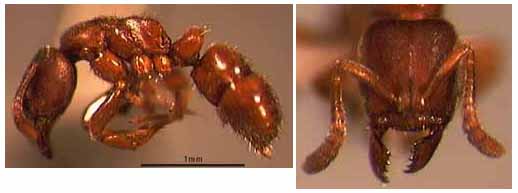
One species (C. gilva) in Costa Rica; habitus similar to small Pachycondyla; small eyes; characteristic pit on base of mandible. In dead wood in montane forest; uncommon.

Uniform habitus; all extremely small (see also Proceratium, which are all larger). Cryptic ants in leaf litter; uncommon.
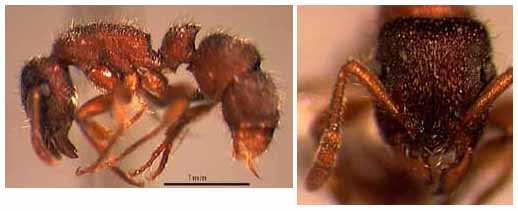
One species in Costa Rica (H. panamensis); similar to Acanthoponera but with less spinose propodeum and petiole. Nest in live and dead stems, mid-elevation wet forest; uncommon.

Uniform habitus; anterior border of clypeus denticulate; mandibles elongate, but not sublinear like Amblyopone; petiole broadly joined to postpetiole, like Amblyopone; eyes small to absent. Cryptic ants in leaf litter; uncommon.
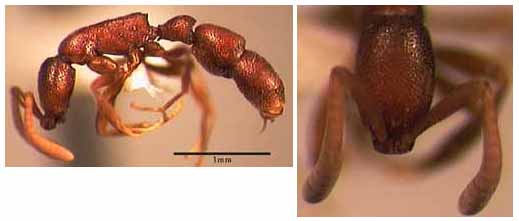
Uniform habitus; eyeless; closely approximated frontal carinae and exposed antennal insertions. A species in this genus has recently been discovered in Guanacaste, and is being described as new by O'Keefe and Agosti. The above figure is of P. boliviensis from Colombia.
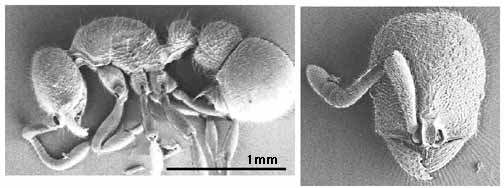
Uniform habitus; closely approximated frontal carinae and exposed antennal insertions; strongly vaulted fourth abdominal segment (segment following postpetiole) (see also Discothyrea). Cryptic ants in leaf litter; rare.
|
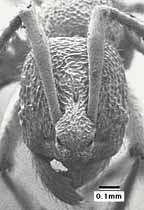 |
Uniform habitus; eyes composed of a single large or small facet; mandibles elongate. Nomadic, group-raiding behavior, convergent with Ecitoninae; uncommon.
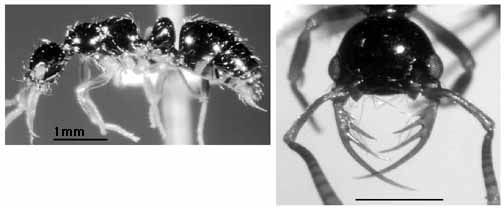
Uniform habitus; highly distinctive mandibles; black and shiny body. In leaf litter and on ground; rare.
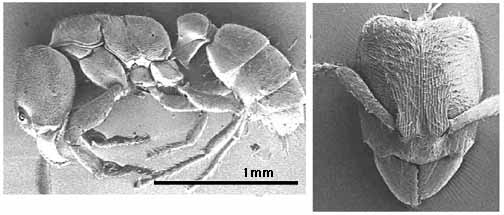
Uniform habitus; frontal carinae short, straight, widely separated; mandibles triangular; eye reduced to single facet; characteristic petiole shape. Nest in dead wood; uncommon.
Page author:
John T. Longino, The Evergreen State College, Olympia WA 98505 USA. longinoj@evergreen.edu